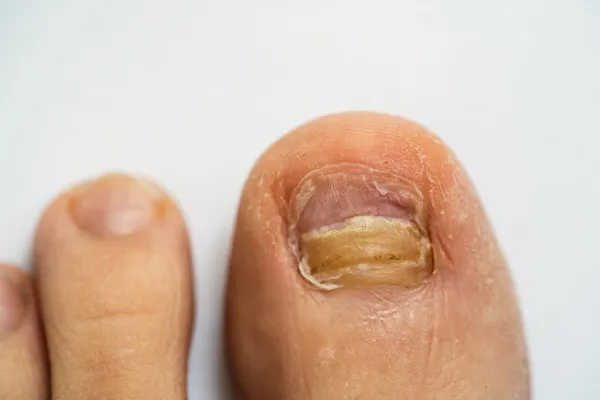
Fungal Nails: What Causes Them and How to Get Rid of Them
Fungal nail infections can sneak up on you. One day your toenails look fine, and then you notice yellowing, thickening, and a crumbly texture that won’t go away. If this sounds familiar, you’re not alone. Fungal nails—also known as onychomycosis—are incredibly common, especially among adults. The good news? With the right treatment plan and a bit of consistency, you can get rid of them.
Let’s break down exactly what causes fungal nails and how to treat them effectively, without wasting time on things that don’t work.
What Causes Fungal Nail Infections?
Fungal nails happen when fungi (usually dermatophytes, yeasts, or moulds) invade the nail bed or the nail itself. These fungi thrive in warm, moist environments—think sweaty shoes, communal showers, and locker rooms.
Here’s what typically causes the infection:
Walking barefoot in public areas like swimming pools or gyms
Sweaty feet trapped in non-breathable shoes
Minor nail trauma, which creates an entry point for fungus
Sharing nail tools without proper disinfection
Having athlete’s foot (which can spread to the nails if untreated)
People with diabetes, weakened immune systems, or poor circulation are also more susceptible.
How Do You Know It’s a Fungal Nail?
You might suspect a fungal infection if you notice:
Yellow, brown, or white discoloration
Thickened or brittle nails
A crumbly or distorted nail surface
Separation of the nail from the nail bed
A bad odour or debris under the nail
If any of this sounds familiar, it’s time to see a podiatrist in Dublin 9. The earlier you act, the easier it is to treat.
Why Fungal Nails Are Hard to Treat (But Not Impossible)
One of the reasons fungal nail infections are so persistent is that the fungus lives not just on the surface, but deep within the nail or underneath it. Topical treatments from the pharmacy may help early on, but they usually struggle to penetrate deeply enough once the infection is established.
This is why professional fungal nail treatment in Dublin 9 is your best bet for lasting results.
How to Get Rid of Fungal Nails
Here’s what works (and what doesn’t):
1. Professional Debridement
At Mary Moore Podiatry, we carefully trim and thin down infected nails to reduce thickness and allow treatments to penetrate more effectively. This alone often improves the nail’s appearance and comfort.
2. Topical Antifungal Treatments
We apply or recommend medical-grade topical treatments that are much more effective than shop-bought products. Consistency is key—daily use over several months is often needed.
3. Oral Antifungal Medication
For stubborn cases, your GP or podiatrist may recommend prescription tablets. These circulate through your bloodstream and target the infection from the inside. They’re effective, but they do require monitoring for side effects.
4. Laser Therapy (Optional Add-On)
Some clinics offer laser treatment to destroy the fungus. While promising, it can be expensive and may require multiple sessions. We focus on evidence-based options that suit your budget and lifestyle.
What Doesn’t Work?
Home remedies like vinegar or tea tree oil: They may sound natural and appealing, but they rarely reach deep enough to cure a fungal infection.
Ignoring it: Fungal nails won’t go away on their own. In fact, the infection can spread to other nails or even to the skin (causing athlete’s foot).
How to Prevent Fungal Nails from Coming Back
Once you've cleared the infection, prevention is everything. Here’s how:
Keep feet clean and dry.
Change socks daily.
Disinfect your nail clippers regularly.
Avoid walking barefoot in communal areas.
Rotate your shoes to give them time to dry out.
Choose breathable footwear and avoid tight shoes.
And don’t forget to treat any signs of athlete’s foot early—otherwise, it can re-infect your nails.
Don’t Let Fungal Nails Hold You Back
You don’t have to live with thick, discoloured, embarrassing toenails. At Mary Moore Podiatry, we provide clear guidance and effective treatments that actually work. If you’re ready to take control of your nail health, we’re here to help—with no judgement, just support.




